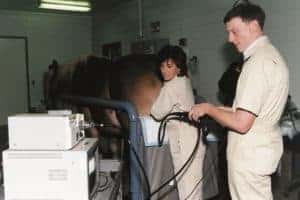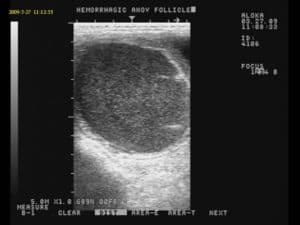
Equine Ovarian Oddities
Here’s a look at the ordinary, as well as not so ordinary, ovarian abnormalities you might encounter in your broodmares.

Here’s a look at the ordinary, as well as not so ordinary, ovarian abnormalities you might encounter in your broodmares.

While removing mares’ ovaries can be successful in remedying aggressive behavior, other estrous behaviors can persist even following surgery.

Knowing which ovarian abnormalities are benign and which are pathogenic can help vets manage mare successfully.

Foaling rates one and two years after successful cyst removal via laser photoablation were 74% and 65%, respectively.

Infertile mare? Deceased stallion? No problem! Equine reproduction is now high-tech enough to overcome these hurdles.
A recent study showed anti-Mullerian hormone levels is a useful test for detecting granulosa cell tumors.
Endometrial cysts occur in up to 22% of all mares and up to 55% of older mares.
The equine uterus, in a manner of speaking, could be compared to a house. When a house is snug and solid with no broken windows, holes in the roof, drafts, or plugged drains, it is a comfortable place in which to live. If, however, there are
Understanding lasers requires knowledge of how stimulated emission multiplies light and produces the unique differences between coherent (laser) and noncoherent (regular) light. Regular light contains a mixture of wavelengths and radiates in a
Stay on top of the most recent Horse Health news with
© 2022 Copyright Statement dolor sit amet, consetetur sadipscing User Terms, sed diam nonumy eirmod tempor invidunt ut labore et dolore magna aliquyam erat, sed diam voluptua. At vero eos et accusam et justo duo dolores et ea rebum. Stet clita kasd gubergren, no sea takimata sanctus est Lorem ipsum dolor sit amet.
"*" indicates required fields